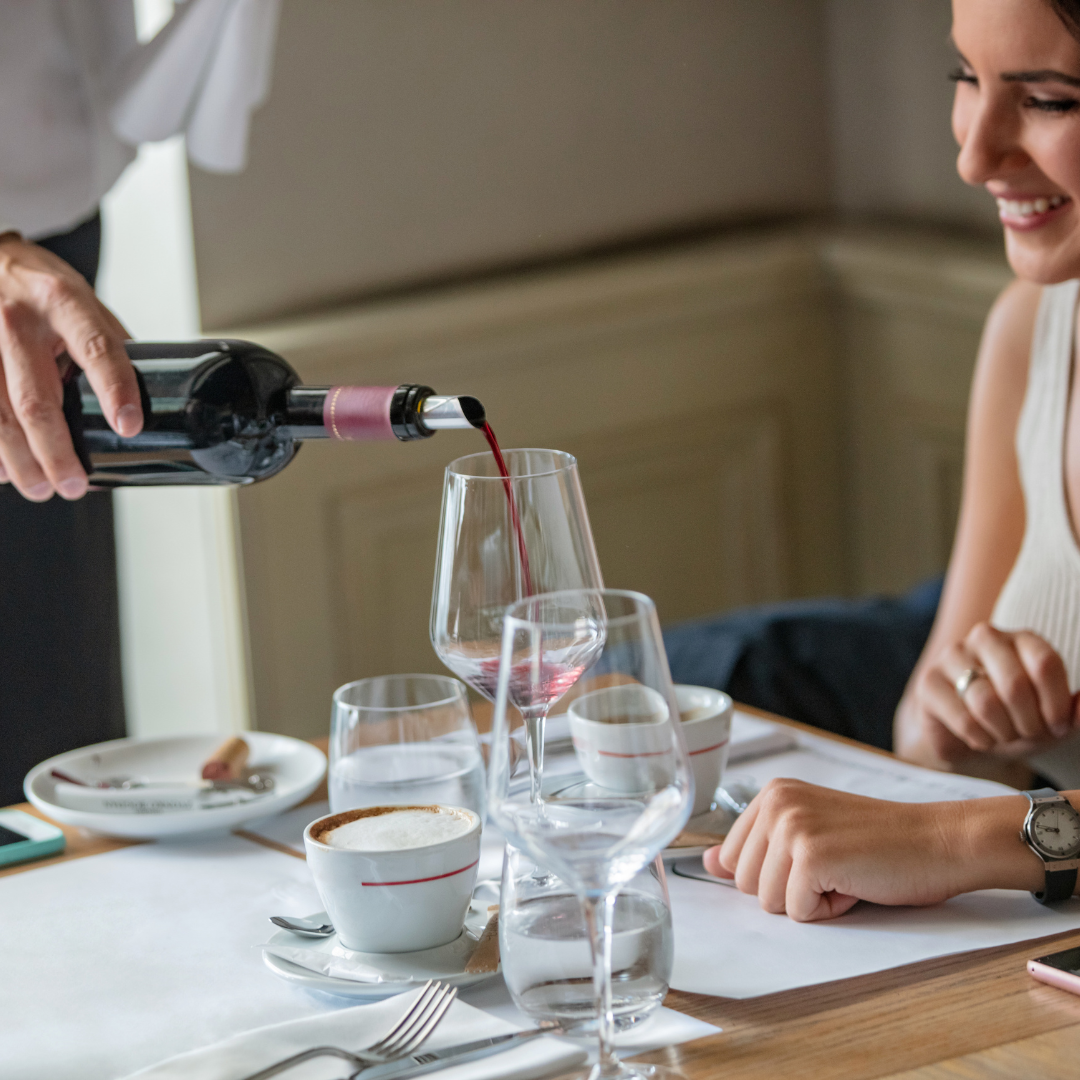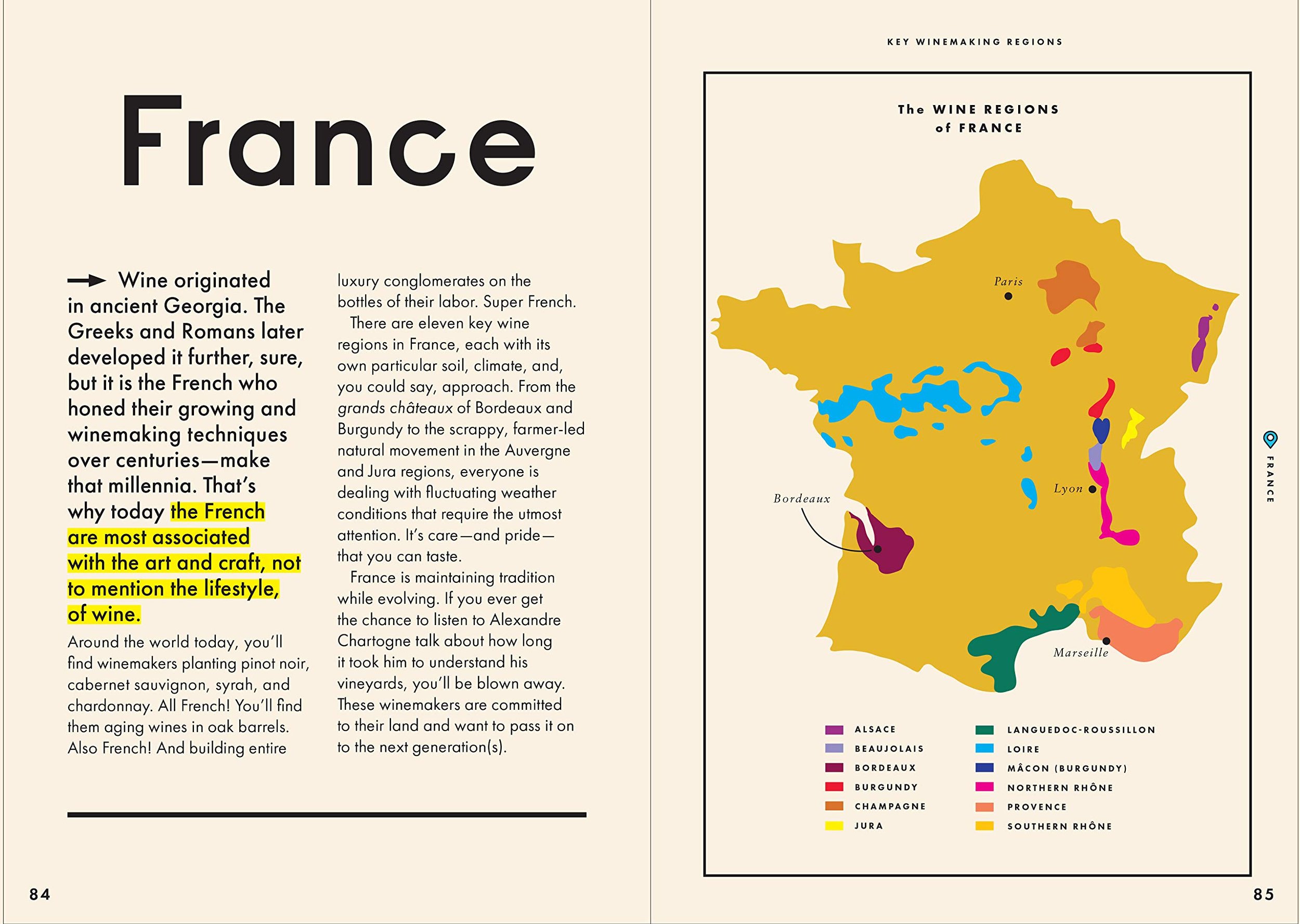Basic Wine Knowledge For Wine Servers
As a server, it is your job to provide excellent guest service. This includes knowing the basics of wine.
Here are some facts about wine that will help you serve your guests better. With this knowledge, you can make suggestions and educate your guests about their choices.
What is Wine Server?
A wine server in the hospitality industry is a trained wine professional whose responsibilities include educating guests on wine pairing, recommending wine selections, and accurately serving wine.
They should be knowledgeable enough to answer questions and advise on wine varietals, vintages, and pairings. The wine server is usually expected to display etiquette and protocol while engaging with guests.
Additionally, they must have great communication skills to explain each wine selection and its special characteristics. With so much responsibility placed on them, wine servers play an important role in making sure that everyone involved enjoys the experience of trying different wine varieties!
Wine Server VS Sommelier: The Difference
Restaurant wine servers serve wine to guests. This includes opening and pouring wine, making recommendations based on guest preferences and the menu, and explaining the wine menu and specials. Wine servers may also stock and track wine sales in the cellar.
However, a sommelier is a specialist in wine service and education. Sommeliers create wine lists, pair wines with food, and educate staff and guests about wine. Sommeliers may manage the wine cellar and organize wine-related events.
A wine server serves customers, while a sommelier manages an establishment's wine program and educates staff and customers.
How To Become A Super Wine Server
Knowledge of wine: The most important aspect of being a good wine server is having a solid understanding of wine. This includes knowledge of different grape varieties, regions, and styles of wine, as well as the basics of wine tasting, wine service, and wine storage.
Guest service skills: Wine servers must provide excellent customer service, including being friendly, attentive, and able to make recommendations based on customers' preferences and the menu.
Product knowledge: A good wine server must be able to explain the menu and specials to customers in an engaging and informative way and recommend the best pairings for food.
Professionalism: A good wine server must professionally conduct themselves, including maintaining a neat and clean appearance, following the dress code and other rules, and being punctual and reliable.
Passion for wine: Wine service is demanding, and a good wine server must have a genuine passion for wine and the hospitality industry to excel in this role.
Flexibility and Adaptability: A good wine server should handle different types of guests and situations and adapt to different service styles and protocols.
Sales Skills: A good wine server should be able to upsell and cross-sell wine to customers and also be able to increase wine sales through suggestions and recommendations.
Attention to detail: A good wine server must pay attention to the details, including keeping track of inventory, ensuring the wine is stored properly, and ensuring the wine is served at the right temperature.
Recommend Book For Wine Server
Wine Simple: A Totally Approachable Guide from a World-Class Sommelier
This book is an essential guide for any wine server working in a restaurant. It covers the fundamentals of wine in an easy-to-understand format, including information on key varietals and winemaking regions, tips on tasting wine, and recommending the right wine to guests. It also includes advanced techniques for evolving your palate, such as building a "flavor library" and understanding good and great vintages.
The book also offers tips for troubleshooting tricky wines and even shows you how to saber a bottle of champagne.
This book is a must-have for any wine server looking to elevate their knowledge and skills in the industry.
This book will help wine servers to gain a comprehensive understanding of the fundamentals of wine, including key varietals, winemaking regions, and tasting techniques.
It includes advanced techniques for evolving your palate, such as building a "flavor library" and understanding good and great vintages, which will help wine servers to recommend the right wine to guests.
The book also offers tips for troubleshooting tricky wines, which will help wine servers handle difficult situations confidently.
It even shows you how to saber a bottle of champagne, which can be a great way to impress guests and elevate your service.
Overall, this book is a must-have for any wine server looking to elevate their knowledge and skills in the industry and deliver customers the best wine service possible.
It's worth mentioning that being a good wine server also requires being able to handle pressure and multitasking, as well as being able to work as part of a team. Remember that wine service is not just about pouring wine. It's about creating an enjoyable and memorable customer experience.
Here are some wine-related skills that every wine server should develop.
Wine types
When it comes to wine, there are generally three types: red, white, and rosé. However, within those categories, a wide variety of styles and flavors exist.
For example, red wine can be light and fruity or full-bodied and rich. White wine can be dry or sweet, while rosé is somewhere between. As a server, it is essential to understand these different types of wine to recommend to your guests.
For instance, if someone is looking for a light red wine, you might suggest Pinot Noir. If they want something full-bodied, you might recommend a Cabernet Sauvignon. By knowing the essential characteristics of each type of wine, you will be better equipped to help your guests find the perfect bottle.
How to taste wine
When it comes to wine, there are basic principles that all servers should know. After all, part of being a good server is providing basic wine knowledge to customers. So here are four basic tips on how to taste wine:
1. First, take a look at the wine. Note the color and clarity. White wines range from straw-yellow to greenish-gold, while red wines range from light pink to deep purple. Clarity refers to how clear or cloudy the wine is.
2. Next, give the wine a swirl. This helps to release the aromas.
3. Take a sniff. Make sure to get your nose into the glass to sense the aromas.
4. Finally, take a sip and hold it in your mouth for a moment before swallowing. Pay attention to the tastes and textures you notice.
Following these basic steps gives you a good sense of what a particular wine is like. This knowledge will come in handy when serving customers looking for recommendations.
Wine and food pairing
Pairing wine with food has been practiced for centuries, and several approaches can be taken. A few key factors to consider when selecting a wine to accompany a meal. First, it is important to consider the dish's overall structure. Is it light or heavy? Is it rich or delicate? These factors will help to determine whether a red or white wine would be a better choice.
Second, it is important to consider the dish's dominant flavors. Are they earthy or fruity? Spicy or savory? Pairing wine with complementary flavors can help to enhance the overall dining experience. Finally, it is also essential to consider the personal preferences of those enjoying the meal. With so many different variables to consider, pairing wine with food can be a complex and rewarding.
Serving wine
Serving wine is both an art and a science. While there are many personal preferences when it comes to temperature and glassware, there are some basic guidelines that can help to ensure that your wine is served correctly. For example, red wines are served at room temperature, while white wines are usually chilled.
If you are still determining the ideal temperature for a particular wine, a good rule is to err on caution and serve it slightly more relaxed rather than too warm. When it comes to glassware, choose a clear glass that is free of any chips or cracks. The size and shape of the glass can also affect the taste of the wine, so choose one that will allow the wine to breathe and express its full flavor. With a bit of practice, serving wine can be easy and enjoyable.
Proper Glassware: Selecting the appropriate glassware for each type of wine is an important aspect of wine service. Different wine glasses have different shapes, sizes, and rim diameters designed to enhance the wine's aroma and flavor. For example, red wine glasses have a larger bowl to allow the wine to breathe, while white wine glasses have a smaller bowl to keep the wine cooler.
Wine storage
Wine is a delicate beverage that is easily damaged by heat, light, and vibration. Therefore, storing wine in a cool, dark, and stable environment is essential. Wine racks made of wood or metal are ideal for this purpose, as they provide a safe place for wine bottles to rest without being disturbed. Additionally, avoiding stacking wine bottles too close together is essential, as this can impede air circulation and spoilage.
Finally, checking on the bottles periodically is also advisable to ensure they are not leaking or developing mold when storing wine for long periods. Following these simple guidelines ensures that your wine collection will remain in good condition for many years.
10 questions every server of wine should be able to answer
What are the main differences between red and white wine?
How do you properly open and pour a bottle of wine?
How do you recommend a wine to guests based on their preferences and the menu?
What are the key factors that influence the aging potential of a wine?
How do you properly store and maintain a wine cellar?
What are the main wine regions and styles of France, Italy, and Spain?
How do you properly serve sparkling wine and champagne?
What is the proper wine glassware to use for different types of wine?
How do you handle and serve wine by the glass?
How do you deal with a customer unhappy with their wine selection?
Please note that these are only examples, and the exact questions a wine server should be able to answer will depend on the specific wine program and menu of the establishment they work in.









